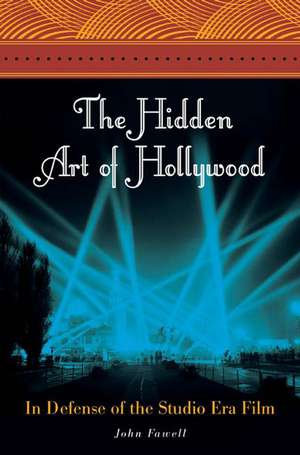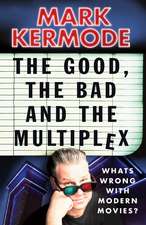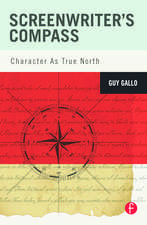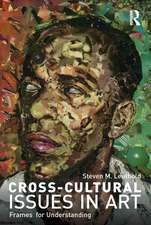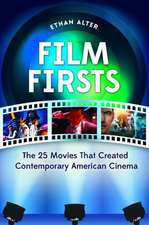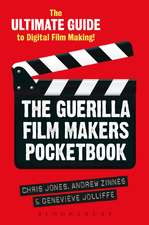The Hidden Art of Hollywood: In Defense of the Studio Era Film
Autor John Fawellen Limba Engleză Hardback – 29 oct 2008 – vârsta până la 17 ani
Preț: 356.01 lei
Preț vechi: 434.68 lei
-18% Nou
Puncte Express: 534
Preț estimativ în valută:
68.13€ • 70.87$ • 56.25£
68.13€ • 70.87$ • 56.25£
Carte disponibilă
Livrare economică 24 martie-07 aprilie
Preluare comenzi: 021 569.72.76
Specificații
ISBN-13: 9780313356926
ISBN-10: 0313356920
Pagini: 240
Dimensiuni: 156 x 235 x 25 mm
Greutate: 0.52 kg
Ediția:New.
Editura: Bloomsbury Publishing
Colecția Praeger
Locul publicării:New York, United States
ISBN-10: 0313356920
Pagini: 240
Dimensiuni: 156 x 235 x 25 mm
Greutate: 0.52 kg
Ediția:New.
Editura: Bloomsbury Publishing
Colecția Praeger
Locul publicării:New York, United States
Notă biografică
John Fawell, a professor of humanities in the College of General Studies at Boston University, has written books on Alfred Hitchcock, Sergio Leone and the studio-era Hollywood film, as well as provided the film commentary for Universal Studio's Blu-ray release of Hitchcock's Rear Window. He lives in Quincy, Massachusetts.
Cuprins
INTRODUCTIONCh.1: WHEN IS CLASSICAL HOLLYWOOD?Ch.2: WHO IS THE ARTIST?Ch.3: WHAT IS A GREAT HOLLYWOOD FILM: THE DIFFICULTY IN ESTABLISHING A HIERARCHYCh.4: TAKING CLASSIC HOLLYWOOD SERIOUSLYCh.5: HOLLYWOODS CLASSICISMCh.6: HOLLYWOOD: AN ART OF SILENCE AND ELLIPSISCh.7: HOLLYWOOD, STYLE AND DECORATIONCh.8: THE ARTIFICIALITY OF THE HOLLYWOOD FILMCh.9: HOLLYWOOD AND SENTIMENTCh.10: HOLLYWOOD ACTINGCh.11: CHARACTER ACTORSCh.12: HOLLYWOOD WRITINGCh.13: HOLLYWOOD AND RHYTHMCONCLUSIONENDNOTESBIBLIOGRAPHY
Recenzii
Discusses aesthetic, thematic, and other aspects of classic Hollywood filmmaking.
.Written in seamless prose and displaying a mild disdain for contemporary Hollywood, this book is part textbook, part criticism, supported by an adequate bibliography, endnotes, and black-and-white reproductions. Recommended. Lower-and upper-division undergraduates, graduate students, general readers.
. . . a well-grounded look at some of the most recognized films of the period.
.Written in seamless prose and displaying a mild disdain for contemporary Hollywood, this book is part textbook, part criticism, supported by an adequate bibliography, endnotes, and black-and-white reproductions. Recommended. Lower-and upper-division undergraduates, graduate students, general readers.
. . . a well-grounded look at some of the most recognized films of the period.
